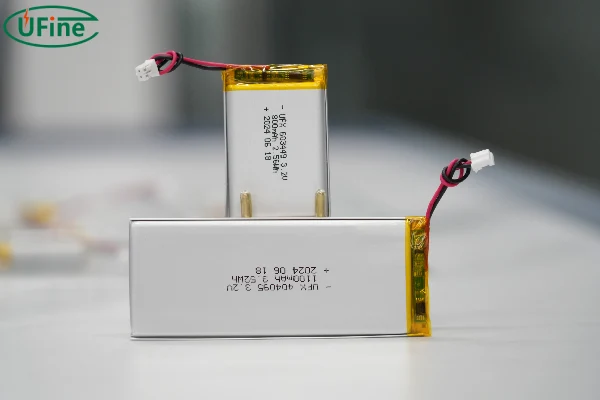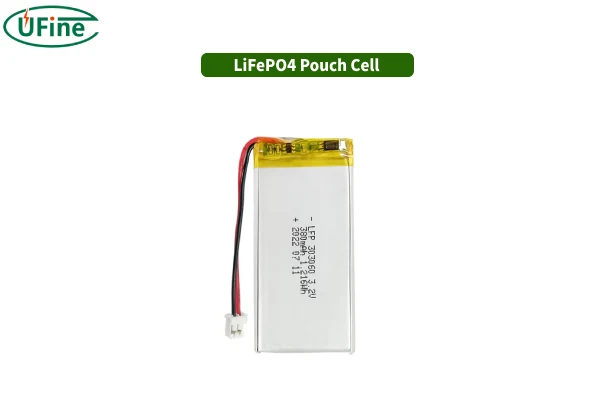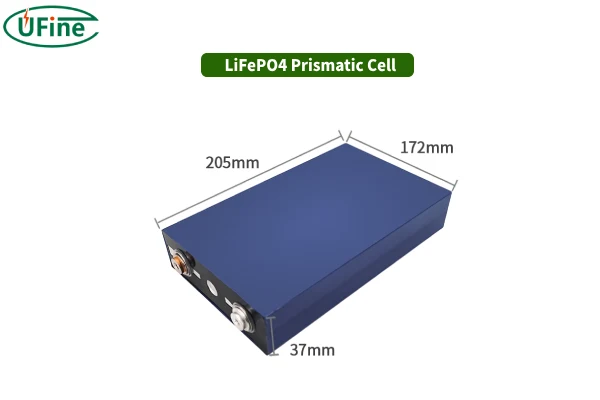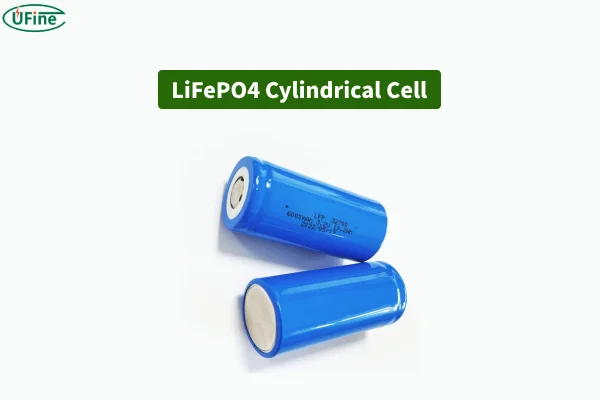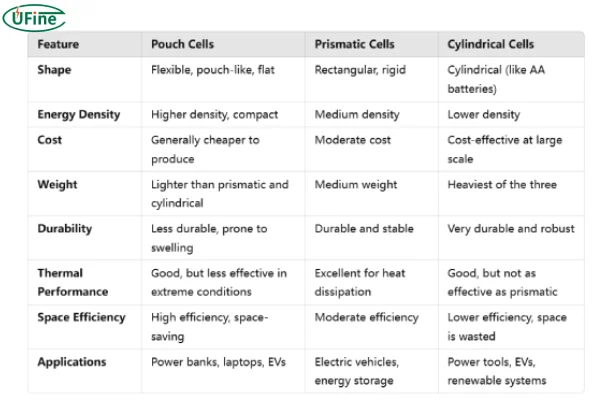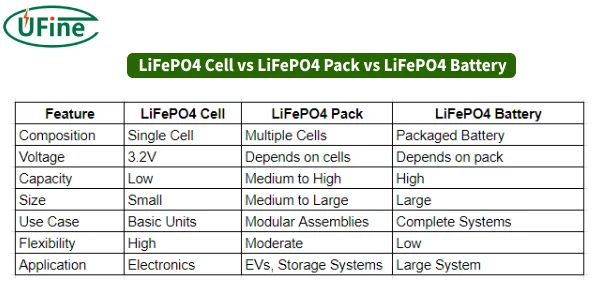
- Part 1. What are LiFePO4 cells?
- Part 2. LiFePO4 Cell Voltage
- Part 3. Energy density of LiFePO4 cells
- Part 4. Advantages and disadvantages of LiFePO4 cells
- Part 5. LiFePO4 pouch cells
- Part 6. LiFePO4 prismatic cells
- Part 7. LiFePO4 cylindrical cells
- Part 8. LiFePO4 cells: pouch vs prismatic vs cylindrical
- Part 9. LiFePO4 cell vs LiFePO4 pack vs LiFePO4 battery
- Part 10. How long does LiFePO4 cell last?
- Part 11. Is LiFePO4 cell better than lithium-lon cell?
- Part 12. LiFePO4 cell price
Part 1. What are LiFePO4 cells?
LiFePO4 cells, short for Lithium Iron Phosphate cells, are a type of rechargeable battery. They belong to the broader family of lithium-ion batteries but have some unique characteristics. Lithium iron phosphate is used as the cathode material, while the anode is typically made of carbon (graphite).
Principle and Structure
At the heart of a LiFePO4 cell is a chemical reaction that involves the movement of lithium ions. When the battery discharges, lithium ions travel from the anode to the cathode through the electrolyte, creating an electric current. Conversely, during charging, these ions move back to the anode. This cycle is what powers your devices.
The structure of a LiFePO4 cell includes:
- Cathode: Made of lithium iron phosphate.
- Anode: Typically made of carbon.
- Electrolyte: Facilitates the movement of lithium ions.
- Separator: Prevents the anode and cathode from touching while allowing ion flow.
This setup ensures a stable and safe battery, which is why LiFePO4 cells are favored in many applications.
Part 2. LiFePO4 Cell Voltage
Understanding the voltage characteristics of LiFePO4 cells is crucial for their proper use and maintenance.
- Nominal Voltage: Typically 3.2V.
- Charging Voltage: Usually around 3.65V.
- Cut-off Voltage (Discharge): Approximately 2.5V.
- Storage Voltage: Optimal storage voltage is around 3.2V to 3.3V.
LiFePO4 cells typically operate at a nominal voltage of 3.2V, but depending on the configuration, you can get different voltages:
- Single Cell: 3.2V – This is the rge energy storage systems. basic unit.
- 2S Configuration: 6.4V – Two cells in series.
- 4S Configuration: 12.8V – Four cells in series.
- 8S Configuration: 25.6V – Eight cells in series.
These configurations allow for flexibility in designing battery packs for various applications, from small gadgets to large energy storage systems.
Part 3. Energy density of LiFePO4 cells
The energy density of LiFePO4 cells is an important factor when considering their use in energy storage systems. Energy density refers to the amount of energy stored per unit of weight or volume. LiFePO4 cells have an energy density typically in the range of 90–120 Wh/kg, which is lower than other lithium batteries like NCM, which can reach up to 250 Wh/kg.
While LiFePO4 batteries may not store as much energy, they are still widely used because of their superior safety features and long lifespan. The lower energy density does mean they are heavier, which can be a limitation for certain applications, such as in electric vehicles. However, for stationary applications, such as in solar power storage, the energy density is usually sufficient, and the other benefits far outweigh this drawback.
Part 4. Advantages and disadvantages of LiFePO4 cells
Advantages:
1.Safety
LiFePO4 batteries completely solve the safety hazards of lithium cobalt oxide and lithium manganate, which is reflected in the fact that the binding force of the phosphate chemical bond is stronger than the chemical bond of the traditional transition metal oxide structure. So, the structure is more stable and less likely to release oxygen.
2. Charge
In terms of charging speed, lifepo4 batteries also have more significant advantages. The feature of supporting fast charging allows it to keep a charging speed of at least 2C (C is the charging parameter; for example, for a battery cell with a capacity of 1000mAh, the 2C current is 1000mA×2=2000mA). It can significantly shorten the charging time. Most mobile power supplies currently on the market use a 5V standard charging voltage, and the charging current is usually 0.2C.
3. Cycle Life
Currently, most of the lithium-ion batteries used in mobile power supplies on the market have a cycle life of about 500 to 800 times. Lithium iron phosphate batteries have a service life of at least 2,000 times, and their capacity can be maintained at more than 80%. Therefore, if the internal storage unit of the mobile power supply is a lithium iron phosphate product, it has an absolute advantage of expected service life.
4. Environmentally Friendly
The positive electrode material of LiFePO4 batteries does not contain precious and rare metals, so it is more environmentally friendly and can effectively reduce environmental pollution. In addition, the wide range of material sources also makes its material costs lower and more advantageous in terms of price.
Disadvantages:
- Lower energy density: LiFePO4 cells generally have a lower energy density compared to other lithium-ion batteries like NCM or LCO.
- Heavier: Due to their structure, these batteries tend to be heavier, which can be a disadvantage in applications like electric vehicles.
- Higher upfront cost: While they are more cost-effective in the long run, LiFePO4 cells can be more expensive initially than other types of lithium-ion cells.
Part 5. LiFePO4 pouch cells
Advantages
LiFePO4 pouch cells are one of the most versatile forms of these batteries. Here are some key benefits:
- Lightweight: Pouch cells are generally lighter than their counterparts, which is great for portable devices.
- Flexible Design: They can be made in various shapes and sizes to fit different devices.
- High Discharge Rate: Suitable for applications that require bursts of power.
Disadvantages
However, pouch cells also have some downsides:
- Swelling: Over time, they may swell, which can affect performance and safety.
- Less Robust: They are more susceptible to physical damage compared to other cell types.
Part 6. LiFePO4 prismatic cells
Advantages
Prismatic cells are another popular form of LiFePO4 batteries. Here’s why:
- Durability: These cells are robust and have a long cycle life, making them very reliable.
- High Energy Density: They can store a lot of energy in a relatively small space.
- Thermal Management: Prismatic cells have better heat dissipation, which enhances their safety.
Disadvantages
But they’re not without their flaws:
- Cost: Prismatic cells are generally more expensive than other forms.
- Weight: They tend to be heavier, which can be a drawback in some applications.
Part 7. LiFePO4 cylindrical cells
Advantages:
- Ease of manufacturing: Cylindrical cells are easier and cheaper to produce in large quantities, making them cost-effective.
- Good thermal performance: Their cylindrical shape allows for better heat dissipation.
- Higher current rating: These cells can handle higher currents, making them suitable for high-power applications.
- Standardized design: Their uniform size allows easy integration into existing systems.
Disadvantages:
- Less space-efficient: Cylindrical cells have wasted space between them when arranged, which can reduce the overall energy density.
- Lower capacity per cell: Compared to pouch or prismatic cells, cylindrical cells generally offer lower capacity in the same volume.
Common LiFePO4 Cylindrical Cells
1. 18650 LiFePO4 Cells
- Description: The 18650 is one of the most common cylindrical LiFePO4 cell models. The name “18650” refers to the dimensions of the battery (18mm diameter and 65mm length).
- Capacity: Typically around 2000–3500 mAh (2.0–3.5 Ah).
- Nominal Voltage: 3.2V–3.3V.
- Common Uses: Electric vehicles, power tools, laptops, power banks, solar storage.
2. 26650 LiFePO4 Cells
- Description: The 26650 model is larger than the 18650, with a diameter of 26mm and a length of 65mm.
- Capacity: Around 3000–6000 mAh (3.0–6.0 Ah).
- Nominal Voltage: 3.2V–3.3V.
- Common Uses: Energy storage systems, larger electric vehicles, and high-performance power tools.
3. 32700 LiFePO4 Cells
- Description: The 32700 is even larger than the 26650 model, with a diameter of 32mm and a length of 70mm.
- Capacity: Typically 5000–8000 mAh (5.0–8.0 Ah).
- Nominal Voltage: 3.2V–3.3V.
- Common Uses: Larger energy storage systems, electric buses, and industrial applications.
4. 21700 LiFePO4 Cells
- Description: The 21700 is becoming more popular in recent years, with a diameter of 21mm and a length of 70mm.
- Capacity: Around 4000–5000 mAh (4.0–5.0 Ah).
- Nominal Voltage: 3.2V–3.3V.
- Common Uses: Electric vehicles, portable energy storage, and power tools.
5. 38120 LiFePO4 Cells
- Description: The 38120 model is a specialized cylindrical cell with a diameter of 38mm and a length of 120mm.
- Capacity: Around 10,000–12,000 mAh (10.0–12.0 Ah).
- Nominal Voltage: 3.2V–3.3V.
- Common Uses: Large-scale energy storage, electric buses, and other heavy-duty applications.
Part 8. LiFePO4 cells: pouch vs prismatic vs cylindrical
Part 9. LiFePO4 cell vs LiFePO4 pack vs LiFePO4 battery
Understanding the differences between a LiFePO4 cell, a pack, and a battery is crucial:
- Composition: A single cell is just one battery unit, while a pack contains multiple cells, and a battery is a complete unit ready for use.
- Voltage: A cell has a fixed voltage, but packs and batteries can be configured to provide different voltages.
- Capacity: Single cells have limited capacity; packs and batteries can store much more energy.
- Size: Single cells are compact, but packs and batteries can be quite large.
- Use Case: Cells are basic units for simple applications; packs are modular and versatile, while batteries are ready-to-use systems.
- Flexibility: Single cells offer the most design flexibility, while complete batteries are less adaptable.
- Applications: From small electronics to large-scale energy storage and EVs.
Part 10. How long does LiFePO4 cell last?
One of the standout features of LiFePO4 cells is their impressive lifespan. Typically, these cells last between 5,000 to 7,000 charge cycles. To put that in perspective, if you charge and discharge the battery once a day, it can last for 13 to 20 years. This longevity makes LiFePO4 cells a cost-effective solution for long-term applications, such as renewable energy storage and electric vehicles.
Part 11. Is LiFePO4 cell better than lithium-lon cell?
When comparing LiFePO4 cells to traditional lithium-ion cells, several factors come into play:
1. Safety
LiFePO4 cells are less prone to overheating and are more stable at high temperatures. This makes them safer than typical lithium-ion cells, which can suffer from thermal runaway.
2. Longevity
LiFePO4 cells offer a longer cycle life, typically 2,000 to 3,000 cycles more than standard lithium-ion cells. This means they can last significantly longer.
3. Stability
These cells are more chemically stable and can handle higher temperatures without degrading. This stability translates into better performance and safety.
4. Environmental Impact
LiFePO4 cells use non-toxic materials, making them more environmentally friendly compared to other lithium-ion batteries that may contain cobalt and other harmful substances.
5. Energy Density
However, LiFePO4 cells have a lower energy density, meaning they store less energy for the same weight compared to other lithium-ion cells. This can be a disadvantage in applications where space and weight are critical.
6. Cost
LiFePO4 cells are generally more expensive upfront but can be more cost-effective in the long run due to their longer lifespan and stability.
7. Applications
While lithium-ion cells are widely used in consumer electronics, LiFePO4 cells are preferred in applications where safety and longevity are paramount, such as in electric vehicles and energy storage systems.
Part 12. LiFePO4 cell price
The price of lithium batteries will vary depending on the type of lithium battery. At the same time, the battery quotation will also be different due to the difference between new and old ones. Sometimes, even the same type of lithium batteries are quoted differently by other manufacturers, which is why the quotes for lithium batteries differ.
LiFePO4 cells are generally calculated based on how much it costs per amp hour. Generally, lithium batteries with higher prices are new cells with relatively better performance and quality. In comparison, those with lower prices are likely to be of rather poor quality or maybe secondary cells. Generally, the price of LiFePO4 cells requiring special performance applications, such as low-temperature and high-rate batteries, will be relatively high. The price will be higher if the quotation is for the battery cell plus the protective plate and casing. Of course, the price will be cheaper if more batteries are needed.
Related Tags:
More Articles
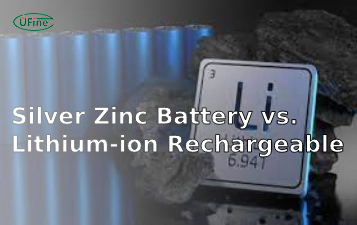
What is the Difference Between Silver Zinc Battery vs. Lithium-ion Rechargeable?
Compare silver zinc and lithium-ion rechargeable batteries: energy density, cycle life, safety, cost, and uses in drones, medical devices, EVs, and electronics.
What are Watts and Watt Hours in Battery?
Understand watt vs watt-hour in batteries: key differences, how to calculate capacity, and why they matter. Includes free comparison table.
Best 10 Blood Pressure Monitor Battery Review: Finding the Most Reliable
Are you looking for a reliable Blood Pressure Monitor battery? Here is a complete guide with the top 10 best blood pressure monitor batteries.
Bluetooth Headphone Battery Guide: All You Need to Know
Maximize headphone battery life with expert tips! Learn how to charge, check, troubleshoot, and choose the best bluetooth headphone battery in 2025.
LiFePO4 Battery VS. Lithium-ion Polymer Battery: Which One Is Best?
Comprehensive comparison of LiFePO4 vs Lithium Ion Polymer batteries: energy density, safety, lifespan, cost. Find out which battery suits your needs in 2025.
